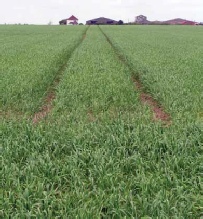
Great Wakering Introduction
Watercolour Reproduced Courtesy of Margaret & Mark Ewen
Wakering: The Settlement of Waecer’s People
Extract from: the excellent ‘Heritage Guide’ by Rochford District Council
 Fifteen hundred years before the first Saxon settlers gave this place its name; men had settled and prospered farming the fertile soil. The British and County Museums exhibit just a small proportion of the large number of artefacts dating from late Neolithic to Medieval times that have been uncovered during brick-earth excavations.
Fifteen hundred years before the first Saxon settlers gave this place its name; men had settled and prospered farming the fertile soil. The British and County Museums exhibit just a small proportion of the large number of artefacts dating from late Neolithic to Medieval times that have been uncovered during brick-earth excavations.
Wakering’s prosperity in the middle ages can be shown by two separate quarrels over the titles, between the Bishop of London, the Prior of Prittlewell and the Monks of Beeleigh Abbey, and Thomas Rawlins corresponding with William Cecil. The Manor of Wakering Hall was the highest rated Essex Manor when Ship Money was levied in 1639.
 A village with large farms, wide fresh marshes providing grazing for cattle and thousands of sheep. An industrial village, with brick, tile, cloth, glove and cheese-making concerns, the famous Essex cheeses with which Drake and his fellow captains victualed their ships; oysters and fish from the creeks, sands and estuary were shipped to Billingsgate along with wild fowl over the centuries.
A village with large farms, wide fresh marshes providing grazing for cattle and thousands of sheep. An industrial village, with brick, tile, cloth, glove and cheese-making concerns, the famous Essex cheeses with which Drake and his fellow captains victualed their ships; oysters and fish from the creeks, sands and estuary were shipped to Billingsgate along with wild fowl over the centuries.
Bricks and tiles have been manufactured since Tudor times and with the industrialisation of the industry in the mid nineteenth century, over six hundred men women and boys produced the bricks which were carried to the rapidly expanding London by a fleet of sailing barges.
 Wakering was described in Catholic Queen Mary’s reign as “a nest of heretics”. Under Elizabeth I two vicars were deprived as Puritans, as was Christopher Scott, a great preacher.
Wakering was described in Catholic Queen Mary’s reign as “a nest of heretics”. Under Elizabeth I two vicars were deprived as Puritans, as was Christopher Scott, a great preacher.
The oral tradition of the village was a Puritan stronghold, which developed later into a non-conformist centre with the radical views that gave Essex its first Labour Parish Council in 1928. It is also known to be the driest place in Britain.




© 2015 - Richard Kirton - All Rights Reserved | Privacy Policy | Terms of Use | Site Map

